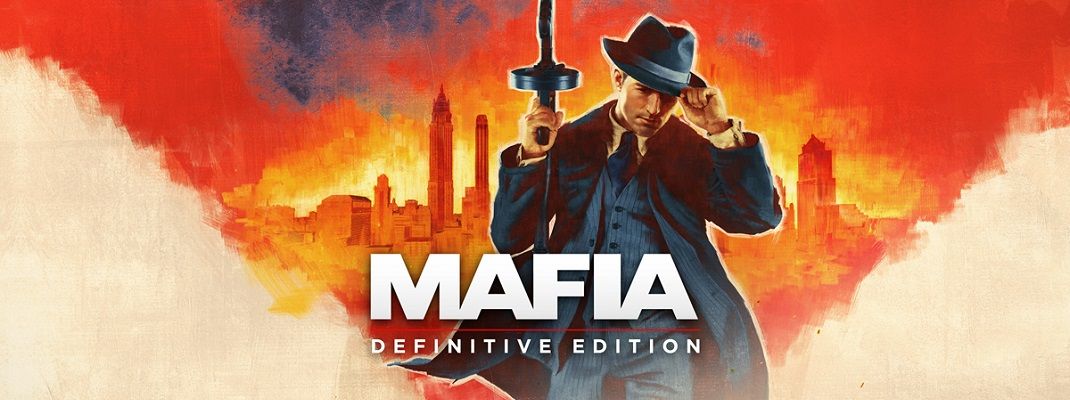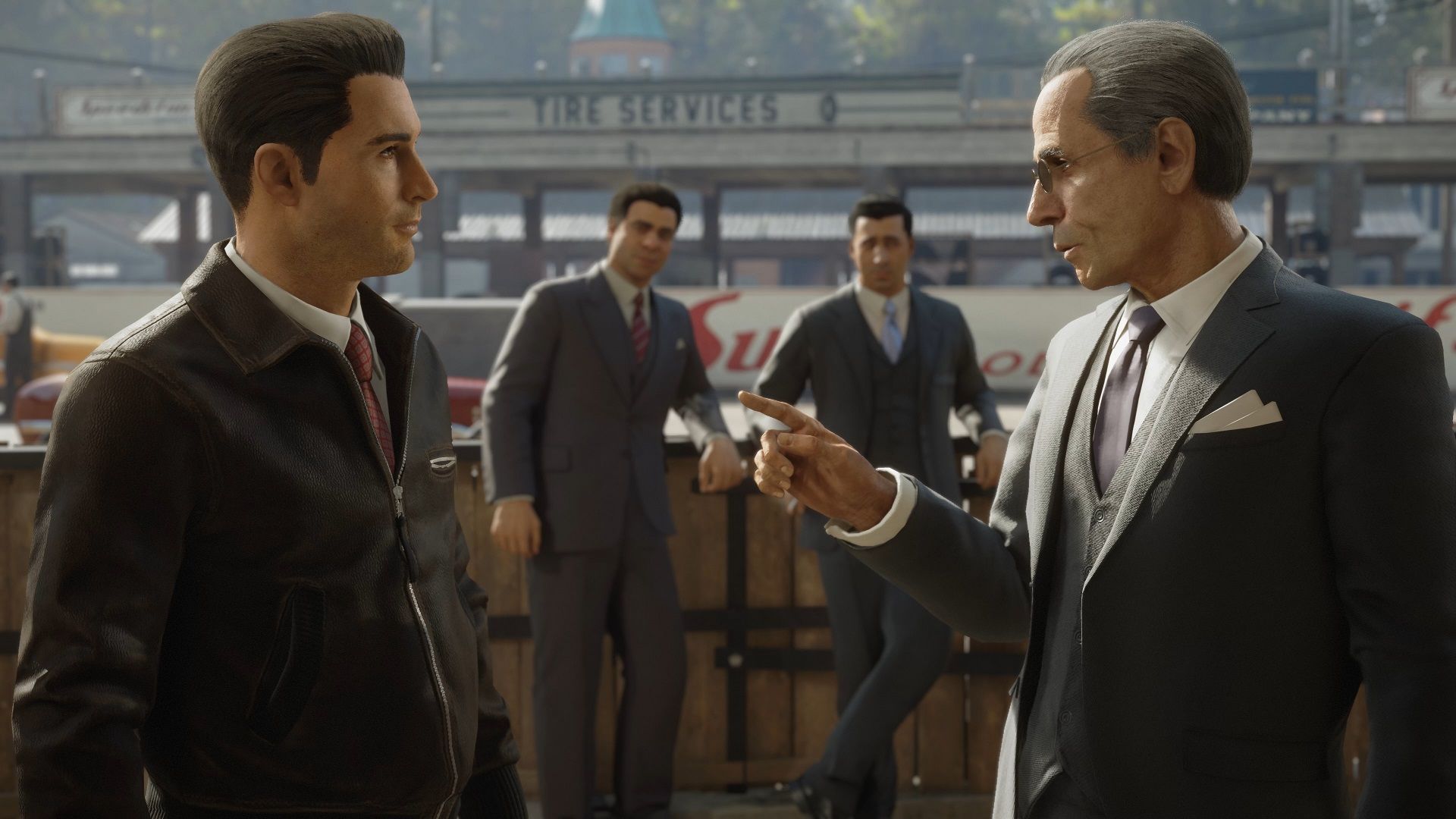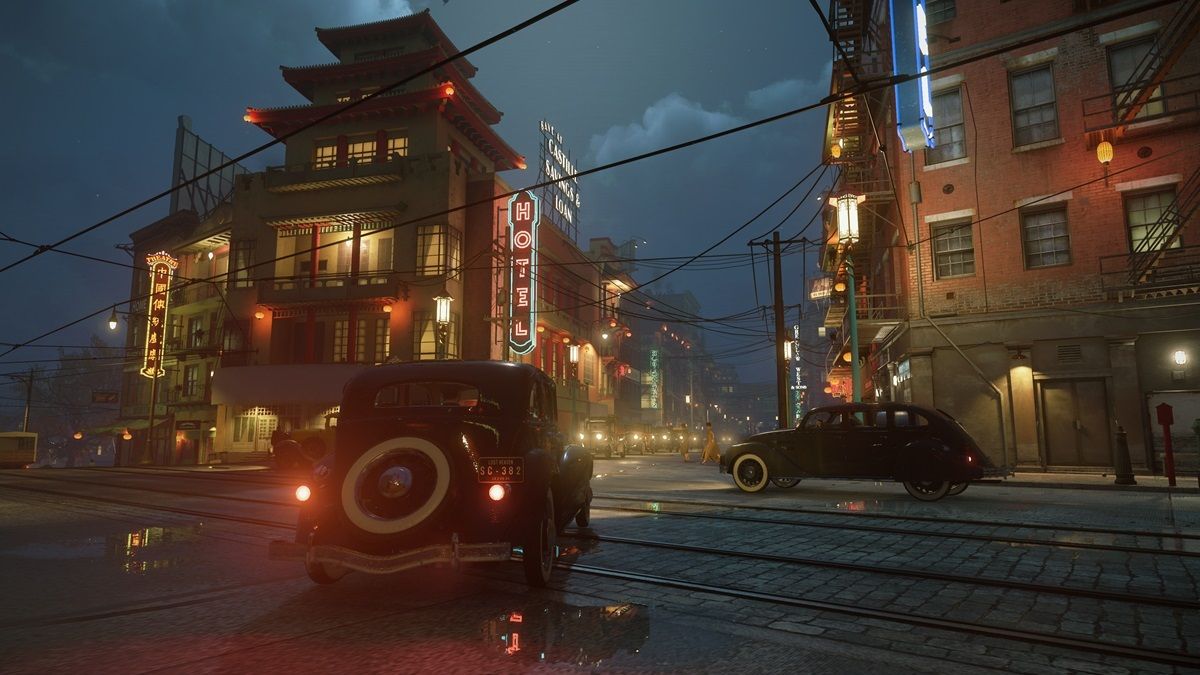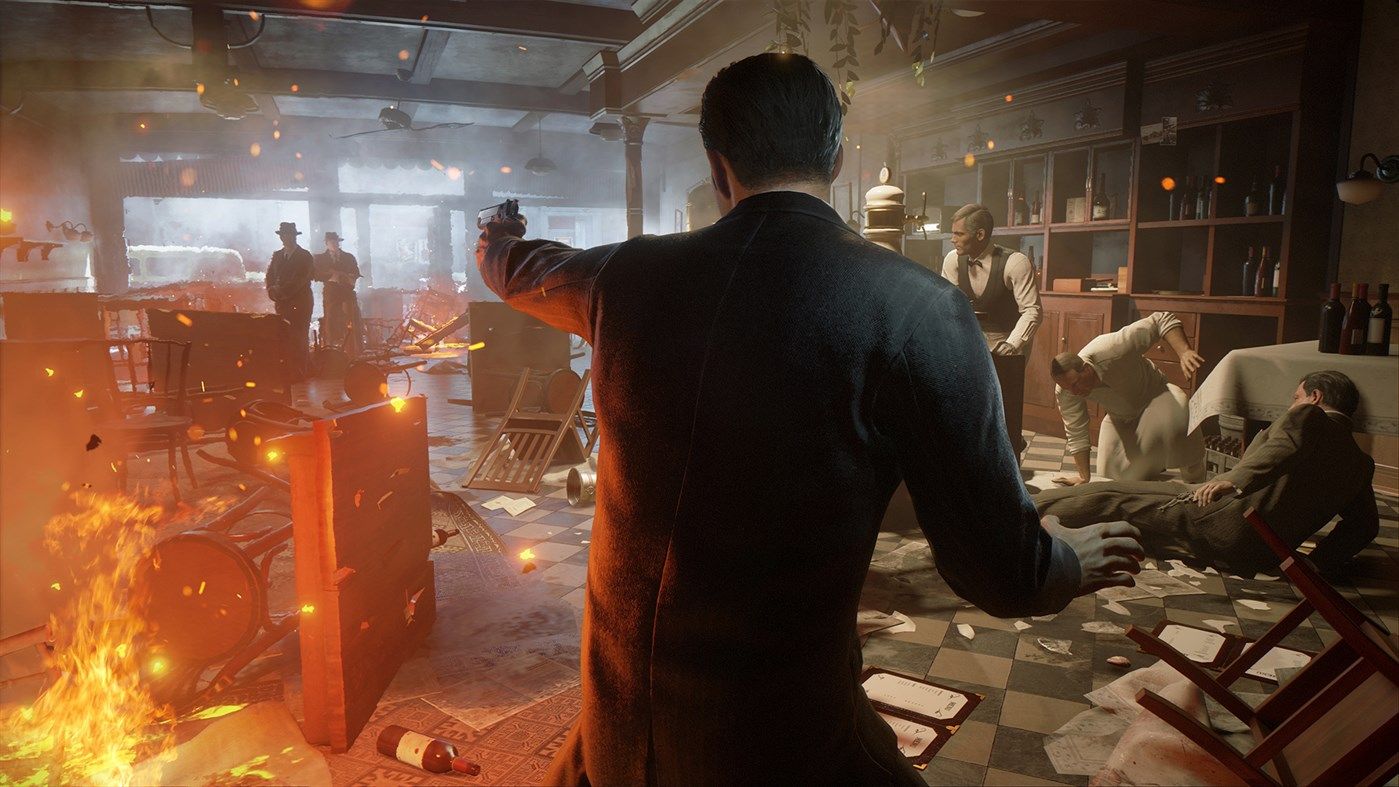Over the past two decades, open world games have become emblematic of the potential of the hardware that they are currently running on, as their need for larger and more fully-realized environments represents a core appeal of the genre. With a new console generation nearly upon us, Sony and Microsoft are using titles like Spider-Man: Miles Morales and Halo Infinite to show off the capabilities of their high-performance platforms, with these expansive spaces still managing to inspire that same sense of wonder and immersion. Although 2001’s Grand Theft Auto III signaled the first major commercial and critical success among open world games, developer Illusion Softworks had their own ambitious title in the works that also put players in the shoes of a criminal. Originally set to come out in 2000 but ultimately not released until 2002, Mafia transported players back to a fictional city in the 1930s and allowed them to live their mobster fantasies that classic films had inspired in many of its viewers. The game was received well among fans and critics alike, leading to two sequels which both received their own Definitive Edition treatments earlier this year from Hangar 13, who have now put their focus into this from-the-ground-up remake of the original title with a brand new voice cast, original musical score and redesigned city. While the sights and sounds of the city combine to create an engaging open world, Mafia: Definitive Edition’s straightforward mission design, predictable story and bland combat does little to encourage either a first-time or return trip to Lost Heaven.
Mafia follows a decade in the life of Tommy Angelo, a cab driver who gradually finds himself becoming a key member of the Salieri crime family during the height of both the Great Depression and Prohibition. As Tommy acclimates to a life on the other side of the law driving his new co-workers to collect payments and deliver whiskey, he finds himself forming close relationships with fellow associates Paulie and Sam, the bartender’s daughter Sarah and the head honcho Don Salieri, who all influence the choices Tommy finds himself making in the years to come. Although the plot occasionally drops interesting nuggets about the complicated history of the Salieri family and the rival Morello family, Tommy’s morality is constantly shifted by the needs of the mission at hand with little justification, and much of the supporting cast feel like generic members of a classic mafia story, with the ten hour campaign leaving little time for character depth or breathing room as it rushes along to the next major story beat. The new voice cast does do a solid job with the work at hand, with the customary accents and dated terminology that can occasionally lead to some brief confusion among a modern audience, but similarly fully embrace the role that each character serves in Tommy’s story with little deviation.
The main attraction of Mafia: Definitive Edition is the Chicago-adjacent city of Lost Heaven, a bustling haven that is shockingly detailed for how little of it ultimately gets properly utilized throughout the campaign, since much of the player’s time will be spent driving past it at reasonable speeds. The period-accurate vehicles with their unique horns as you cut in front of them, the news broadcasts on the radio that address relevant local and international events that don’t feel as unfamiliar as one would hope nearly a century later and the towering buildings with cigarette or political ads plastered on the side all contribute to a fully-realized and atmospheric world that stand shoulder to shoulder with some of the better open worlds in games in recent years. The supposed districts labelled on the in-game map do little to differentiate themselves from one another in clear ways outside of Chinatown, and the usefully subtle GPS offers little incentive to use the shortcut-like alleys outside of high-speed chases, but these small issues don’t hold Lost Heaven back from being as well-realized as it is.
Unfortunately, the campaign of Mafia: Definitive Edition does little to take advantage of its biggest draw, leaving no time whatsoever for players to explore Lost Heaven at their leisure. For the entirety of the campaign, every final objective or cutscene that wraps up each mission leads directly into the introductory cutscene of the next one, so players don’t have the option to continue the narrative when they feel like doing so like most open world games traditionally offer. Nearly all of these missions feature driving in some capacity, whether it’s listening to your passengers bicker as you head towards your objective, or partaking in car chases either in pursuit of a fleeing enemy or away from an alerted police force that operates on a five star system similar to Grand Theft Auto. When Tommy does step out from behind the wheel, he can sneak and silently take down enemies, find clearly-marked collectibles and partake in on-foot chases, melee brawls and cover-based shootouts. A few missions do have narrative justification for remaining as silent as possible and add a nice sense of pacing and variety that help the missions from all blending in with one another. But outside of one single mission that allows players to tackle multiple objectives in the order that they see fit, the vast majority of the campaign is primarily linear in its design, with no side missions and little room for experimentation despite the unique interiors and seemingly large-scale sections of the world that these sequences take place in. By themselves, the missions are occasionally ambitious and usually laid out well enough to point the player in the right direction, but the contrasting natures of the expansive open world and restrictive mission design constantly butt heads with one another, with the latter typically winning out and forcing the player down its singular path.
As the Salieri crime family’s head chauffeur, Tommy spends plenty of time in a variety of period-accurate vehicles, with the full game providing access to over forty different cars, trucks and motorcycles. Although some missions force players to use a specific car, others do allow players to visit their garage and pick from any previously-driven vehicle, with some room for customization by changing the exterior and interior colors. While some of the vehicles feel similar to one another, the handling on all of the ones that we encountered during our playtime worked well enough, with players gradually getting adjusted to the slow acceleration and caution needed around turns that these relatively early automobiles require. The motorcycles, which are a first for the series, as well as a few high-end cars do have the capability to reach top speeds, but nearby police will keep an eye on the player’s speed, with a speedometer located conveniently next to the mini-map. This realistic integration does get addressed early on in the story and can be appealing to those looking to fully immerse themselves in the world, but those who would rather ignore this mechanic can easily turn on a speed limiter that will automatically adjust based on the street they are currently driving on. Fortunately, this mechanic rarely conflicts with the few missions that do expect the player to put the pedal to the floor, as Tommy can ram other vehicles and shoot a pistol (with infinite ammo) while driving to help out during car chases that take advantage of some of the destructive elements of the environment.
After the first couple hours of gameplay, Tommy will eventually gain access to a growing arsenal of ranged, throwable and melee weapons that often come in handy during the more dangerous sequences. The close-quarters combat is basic, as players can typically avoid the counter ability altogether and just spam the attack button until the weirdly-animated finisher option pops up, with the baseball bat and knife just shortening the time that these encounters last with no additional strategy. Shootouts are a little more fleshed-out, with a simple but necessary cover system as enemies can whittle you down to low health with ease even on normal difficulty. The weapon variety available is perfectly fine, with two shotguns, two rifles and four pistols to pick from, but with no way to upgrade or customize your firearms, and with shooting mechanics that work well enough but rarely feel satisfying to perform, shootouts start to feel increasingly routine as the game wears on with a few exceptions. While the enemy AI will occasionally shift their position to get a better angle on Tommy, they will rarely attempt to flank you even when wielding shotguns, instead relying on molotovs and grenades to draw you out. As a result, players can win most battles by staying in the same cover until a few enemies are left, making them easy to flank with little risk. Ammo can frequently be an issue, forcing players to rely on their pistol until there’s a break in the action and they can find dropped weapons to swap with or grab ammo from, while one-use health boxes are typically spaced out throughout a level. Both of these are conveniently marked on the mini-map, but players can up the difficulty to hard or classic to remove these indicators and increase damage taken for those that want a tougher challenge.
From a distance, Mafia: Definitive Edition looks stunning, with the opening cutscene capturing the many views and vistas available to discover in Lost Heaven, and the traditional camera perspective still allowing the city to shine bright. The vehicle models are equally impressive up close, and while some of the character models and close-up face shots don’t hold up to the same level of scrutiny, they rarely distract too much from the story beats. The licensed soundtrack on the car radios is fitting, and should likely appease fans of Fallout or Bioshock, while the original score is at its strongest during fast car chases or loud shootouts, but struggles a little more in the quieter moments, as its faster tempo doesn’t fit in as well during regular conversations. The technical performance of Mafia is mostly consistent with some minor issues, including pop-in while driving at higher speeds, a few frame stutters during some of the more explosive sequences and a couple instances of glitched objectives that fix themselves after restarting a checkpoint. Outside of the story mode, players can also check out the Free Ride mode, which allows players to customize Tommy, mop up extra collectibles and complete challenges for hidden vehicles while exploring the open world at their leisure, and the Carcyclopedia, wherein players can inspect and test drive their unlocked vehicles in a timed race track challenge. But with no ways to modify either of these additional modes, the full package offers little in the way of replayability for those who don’t consider themselves completionists.
Closing Comments:
Mafia: Definitive Edition’s gorgeous open world is weakened by its mediocre campaign and flat combat mechanics. Driving through the bustling streets and open countryside of Lost Heaven in classic vehicles is fun enough at low or high speeds, and the story, while rushed, does ultimately put players in cool locations and situations. But without any unique storylines or exciting on-foot gameplay to keep the player invested, and a restrictive focus on missions over open world exploration, there’s little here that stands out for those who don’t already have a fascination with mafia stories or mid-twentieth century history. For all the emphasis Mafia: Definitive Edition places on history and creating a legacy, this well-made but largely forgettable journey doesn’t do enough to earn its spot in the family.




